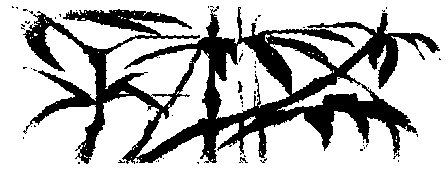|
|
“The Book of Fight” appeared in Poland yet in the second half of the 19th century as a result of a romantic surge of interest in
the Eastern culture. This information has been only verbally provided by some family which, by the way, judged this fact an insignificant evidence of eccentricities of one of its members. Other
circumstances of the presence of the “Book” in Poland are unknown. Neither do we know where it come from nor how and why were they brught to Poland. Moreover, “The Book” has only been seen by few pairs of eyes.
This manuscript - which the book in question actually is - or even a pile of manuscripts were lying for an indefinite period of time among other old stuff items (being probably a collection of “the curiosities of the Mysterious East”).Later, when the interest in exotism was lost, a packet containing the manuscripts, tied with a string,
was placed in a trunk in the attic. There it luckily survived two world wars.
It is alleged (there are facts) that “The Books” are connected with a distinct ‘feline’ mode of fight containing a ‘feline
philosophy’ and ‘feline technique’ or ‘tactics’. The introduction is the achievement of a Gate of Five Questions, which is followed by (only mentioned) Trials of Eight Stones, Five Transformations, Trails of Three
Dragons and finally comes the end, Sunrise (The Sun in the East). By analogy, one may expect that it refers to eight symbols: sky, earth, water, fire, East, West, South, North and to Five Transformations connected with basic elements: metal, wood, water, fire and earth. Thus opens the way which the cat is to follow.
The essence of NEKO-DO = The Way of a Cat (Chinese: Mao de)
is a philosophy of fight without fight, that is one aiming at avoiding a destructive physical contact thanks to the knowledge of an opponent’s
psyche and the usage of strategems. However, it may only be possible if A CAT is fit, observant, clever, fast and agile. Therefore it has to develop
an ability of treading – both in a physical and psychological sense – jumping, creeping and being invisible while still being present.
Neko-do contains the elements of bushi-warriors’ knowledge, however, it is known that The Way of a Cat – as a specific martial art – was popular among ronins. These were warriors originating from samurais (it is a Chinese name for the caste buke-warriors), who were, in various ways, devoid of their dayimo-masters. It could
consist in simple gaining the independence, getting such a role (e.g. to take revenge on somebody), excluding a samurai from the ranks of vassals
and, finally, in staying alive after an an exile or a death of their master, which could also be connected only with some superficial task or
an explicit master’s demand that the samurai stayed alive. Ronin, ‘man-wave’ – as he was called – flowing aimlessly in whatever direction, was a sinister figure as he was left alone to himself, devoid of any
master’s care and guidance, he had to carry on alone, which meant to decide about his life and become a master of himself. Kurosawa’s film ‘Seven Samurais’ presented ronins committed to one thought,
one mission or one idea – associated with one another to carry out the mission. The lack of a protective guide and a superior contributed to ronins looking for novelties and skills in the field of martial arts and magic.
When a ronin acquired some life wisdom and achieved a higher ethical level, he could become a MAN-CAT.
An
average ronin could teach martial and survival arts to anyone who wanted to be taught and who paid for it. Ronin-CAT, however, was limited in his choice of learners. He was looking for somebody who would be cut out for being a MAN-CAT. Such a preson had to fulfil a number of conditions which are indicated by the Gate of Five Questions..
Ronin-CAT was not only subject to himself but also to an idea of Good, which he was to defend.
Ronin-CAT
had a right to takie his own decision but this was to stem from his commitment to the idea of Good.
Ronin-CAT managed on his own but he was bound up – through the idea of Good and relations with other ronins – with a surrounding aura of potential help and support.
The knowledge from ryu-schools of martial arts included the knowledge of jujutsu (fight without weapon) and
judo (way of fight), kyujutsu (archery) and kyudo (way of bow and arrow), kenjutsu (this and other kinds of cold steel fight) and kendo (way of sword), bajutsu
(horse-riding), torioi (hunting) and also igaku (medicine), reishiki (etiquette) and other skills including shisaku
(poetry). The MAN-CAT also explored a knowledge of
yamabushi-highlanders and fighting monks who dealt not only with martial arts but also with magic. Shuken-do was a seek way through supernatural matters as well as through herbalism, medicine, hypnosis and various arts which could now be classified as the art of survival.
Finally, in the life of the MAN-CAT appeared Tao, which in Chinese means (nomen omen) sword. |
|

![]()
![]()
 look into it and make a long journey...
look into it and make a long journey...